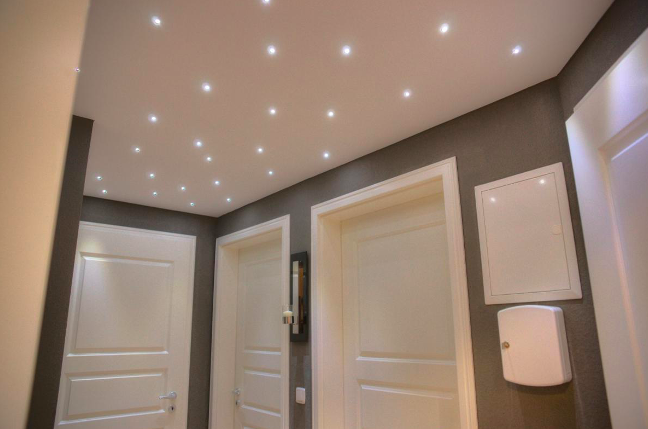The bath is usually insulated with polystyrene foam or mineral wool. The materials are quite high quality, but have their own characteristics. For example, cotton wool absorbs moisture - mandatory waterproofing is required. Expanded polystyrene is not always durable, so it is not used for the floor. Recommendations for choosing a material, as well as step-by-step instructions for warming the bath from the inside with your own hands, can be found in this article.
The content of the article
-
Which heater to choose
- Mineral wool
- Expanded clay
- Styrofoam
- Styrofoam
- Step-by-step instruction
Which heater to choose
When planning how to properly insulate the bath from the inside, how to outline work, you should first choose the material. In this case, it is necessary to take into account the features of the microclimate in the room:
- the temperature often reaches 60-70 degrees;
- humidity - 60-70% and above, including in the dressing room;
- during the procedure, a very high temperature is required, so it is desirable that the material has a foil surface that reflects heat.
If we talk about the better to insulate the bath from the inside, it is worth considering such heaters.
Mineral wool
A common material is represented by basalt, fiberglass and slag. Basalt is produced in the form of slabs or rolls of different thicknesses in the range of 50-100 mm. This method of how to insulate a bath provides several advantages:
- high strength - can be placed on any surface;
- protection from cold and noise;
- resistance to temperature changes (up to 200 cycles);
- lack of rotting, fungi;
- ease of installation - can be easily cut into fragments of any size.

But if you do the warming of the steam room in the bath with the help of basalt, you need to understand that the material is quite expensive. In addition, it is not resistant to moisture, so mandatory waterproofing is required.
Another type of mineral wool is fiberglass. It is more affordable and also has the following advantages:
- low thermal conductivity;
- the material is not combustible;
- resistance to fungi, mold;
- mechanical strength.
But the material is dangerous in contact with the skin. Therefore, you need to figure out well how to insulate the bath from the inside, be sure to purchase overalls, gloves and a mask. In addition, fiberglass is not resistant to moisture - the use of waterproofing is mandatory.
Even more affordable at the price of slag. It is easy to install, besides the material is resistant to rodents and mold. However, this is not the best way than to insulate the bath from the inside, since there are quite a few minuses:
- does not withstand sudden temperature changes;
- the material accumulates a lot of moisture;
- during installation, be sure to use a respirator, overalls;
- the composition contains formaldehyde and phenol - these are toxic substances, so it is not always safe to use such insulation indoors.
Expanded clay
There is also such an option as to insulate the bath from the inside with your own hands - with the help of expanded clay. These are small porous clay stones, which are poured in a high layer of 20-30 cm. For rooms with a low ceiling, this option is clearly not suitable, but if the bath is spacious, expanded clay is quite suitable. It has quite a few advantages:
- contains no hazardous substances;
- protects well from the cold;
- not attractive to rodents;
- mold resistant;
- refractory;
- affordable.
However, the material absorbs water, so waterproofing is required. In addition, it is loose - only suitable for the floor, and the insulation for the walls of the bath should be different, for example, from mineral wool.
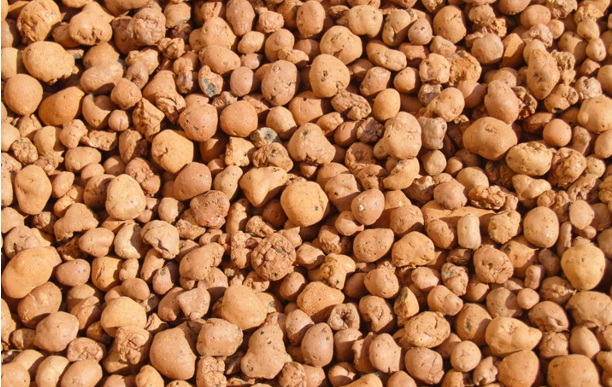
Styrofoam
Insulation of a steam room in a bath is often performed using polystyrene foam, since it is affordable, easy to install and has several advantages:
- resistant to high humidity - when absorbed, almost does not increase in volume (maximum 0.2%);
- durable;
- very low weight;
- not combustible;
- mildew resistant.
However, it should be borne in mind that already at 95 degrees, the foam loses its chemical stability and begins to release phenol. In addition, it does not allow moisture to pass through, so a ventilation system must be provided in the room.
Styrofoam
Considering how to insulate a brick bath, you can stop at polystyrene foam. It is also resistant to moisture and temperature extremes, and has additional advantages:
- mechanical strength (also suitable for the floor);
- durable, serves 40-50 years or more;
- resistant to rodents, fungi, mold;
- has a small weight;
- easy to install.
But such material is quite expensive, especially when compared with polystyrene foam. In addition, it is not resistant to fire - under the influence of open fire, it begins to melt and release dangerous organic substances.
Step-by-step instruction
After choosing the right material, you can start work. Pre-prepare tools and improvised means:
- electric saw;
- screwdriver, bit set;
- stapler for construction work;
- level;
- knife;
- aluminum tape;
- self-tapping screws;
- vapor barrier material;
- foil;
- beam with a section of 50 * 50 mm for the construction of the frame;
- board 20 mm (a counter-lattice is made from it);
- roulette.
Step-by-step instructions for warming the steam room from the inside looks like this:
- They take a bar, cut it into fragments and assemble the frame, fasten it with self-tapping screws.
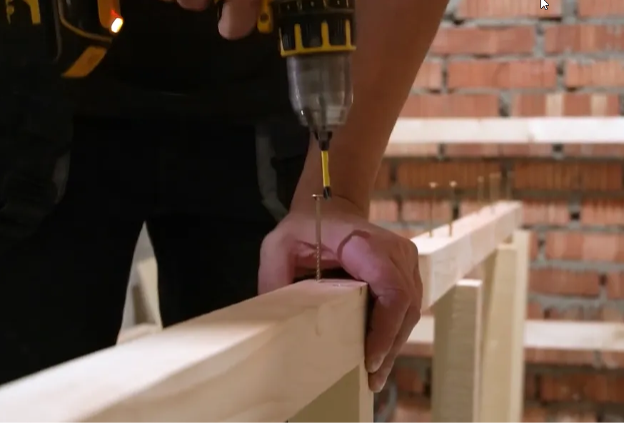
- They put the frame of the wall surface and control the correct position of the level. According to the size of the cells of the structure, the insulation for the steam room is cut from the inside.
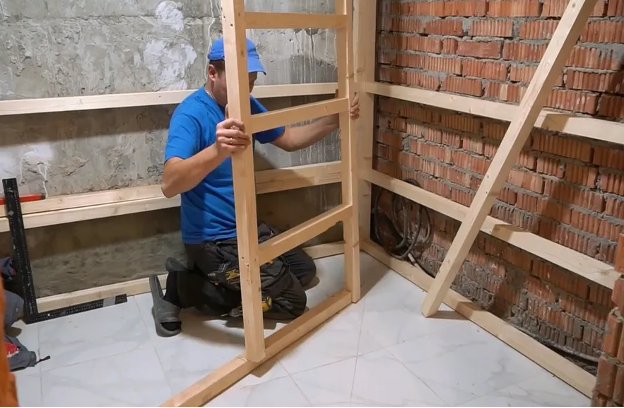
- Set up anchor bars. They play the role of additional fasteners in those parts of the frame where it is planned to put a shelf, lamp, etc.
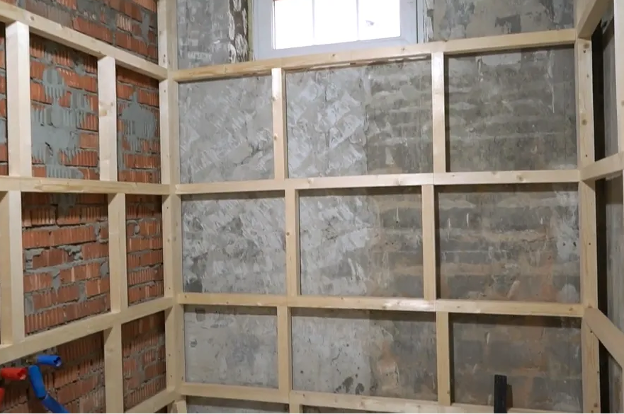
- To properly insulate the bath from the inside, you should put guides on the ceiling - also based on a wooden beam. They must go strictly parallel to the floor, so you need to constantly check the level.
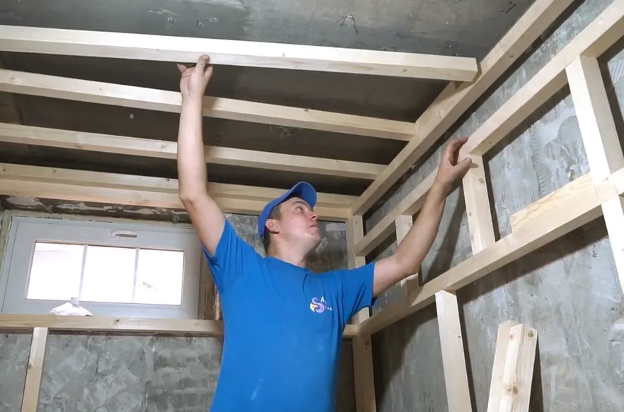
- Now you need to lay the vapor barrier directly on the wall surface. Lay overlap so that the sheets intersect at least 10 cm. They are fixed with a stapler, after making sure that they are in the right direction inside and out (there are special symbols for this directly on the sheets).

- Now you need to figure out how to insulate the bath inside. For example, polystyrene foam is often used for the ceiling. They put it in two layers - first between the space of the ceiling and the frame, then in the cells between the bars.
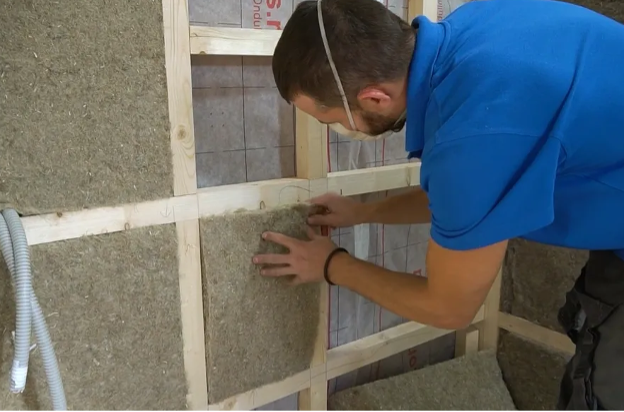
- If you study the insulation of a steam room in a brick bath from the inside step by step, it must be said that the next step will be the installation of the foil. To do this, use kraft paper, it is attached to a wooden beam with a stapler. The sheets are also overlapped by at least 10 cm.
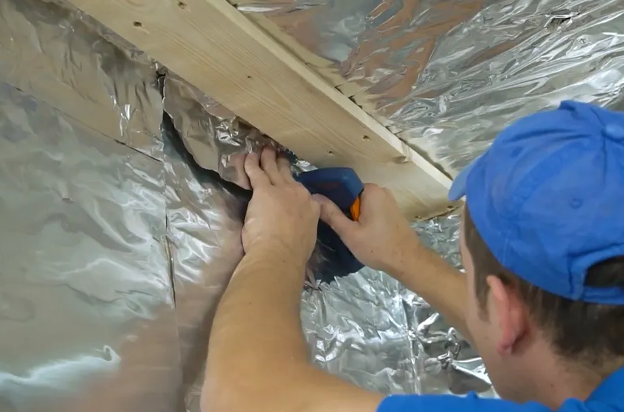
- The joints are fixed with metallic tape.

- The counter-lattice is mounted on the basis of a planed board 20 mm. This is the last stage of warming a brick bath, after which you can proceed to the finishing.
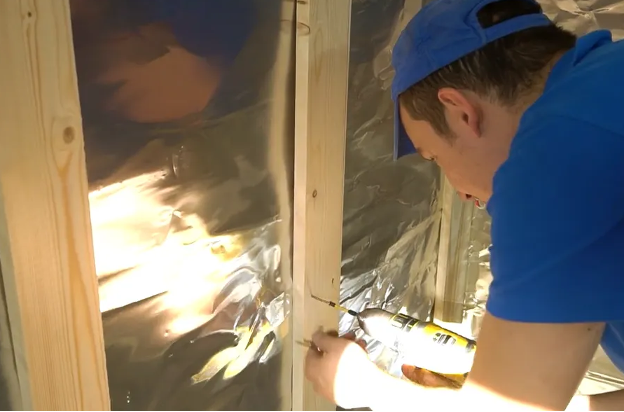
Thus, the insulation of a brick bath from the inside can be done independently. But in any case, in such a room there is always high humidity, so you should not only use waterproofing, but also make a ventilation system. It is also important to constantly ventilate the room that has not cooled down for half an hour. This will maximize the life of the heater.


